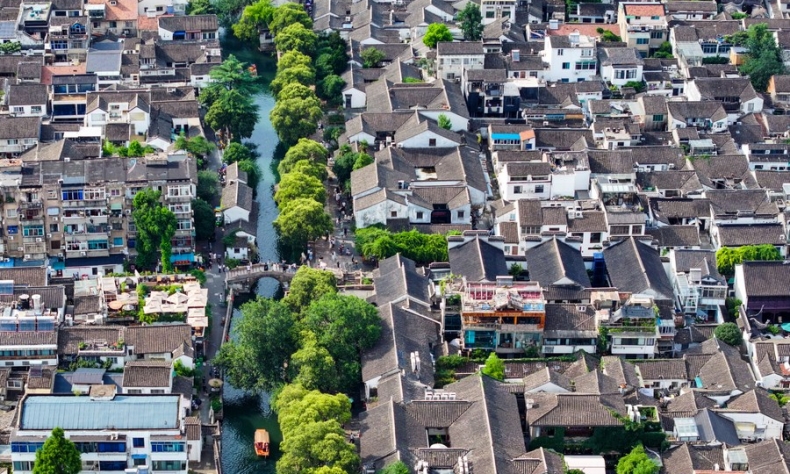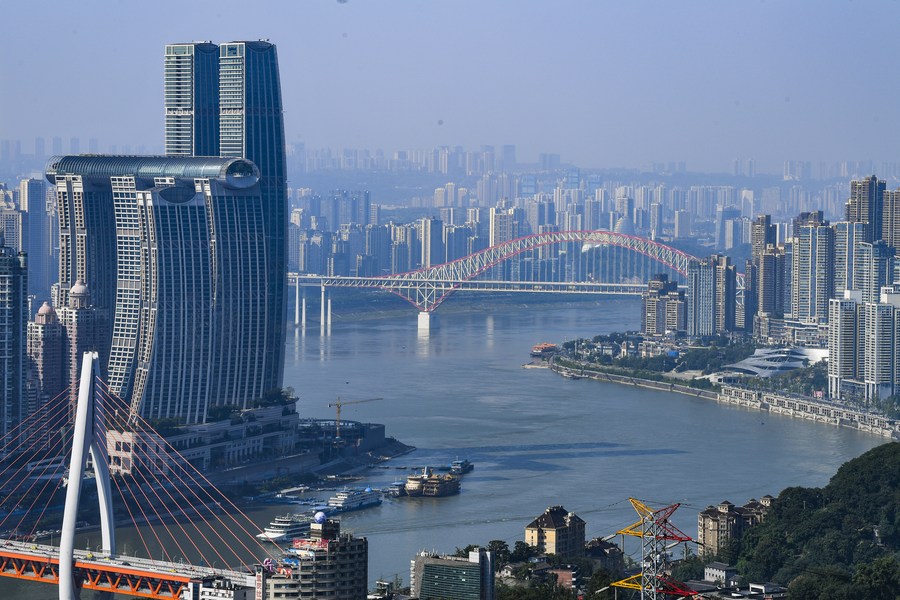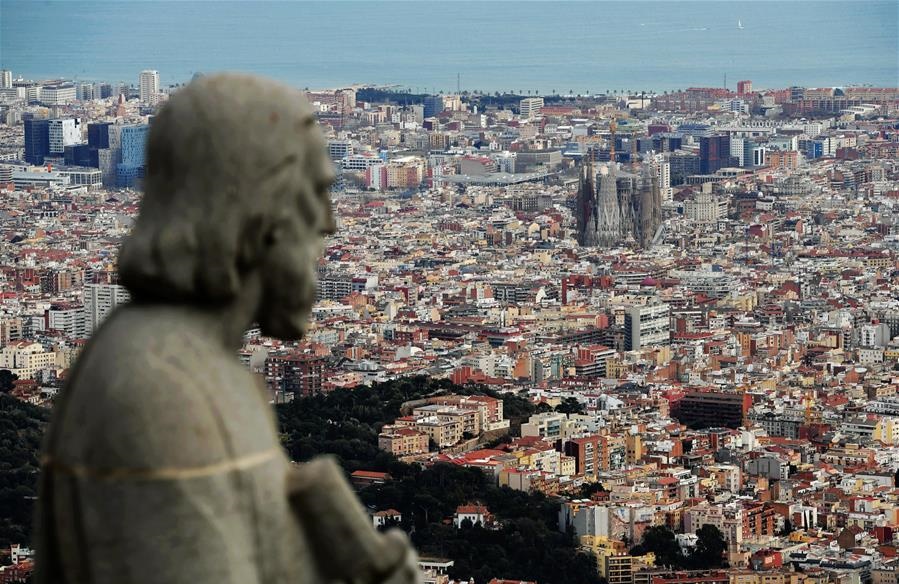When Design Defines a City

Both Spain and China’s practices in urban design show how urban governance, local social development, and people’s needs shape a city’s landscape.
In the 20th century, China and Spain faced the common challenge of urban transition. In China, it began with the urbanization and revitalization process with the inception of the reform and opening-up in 1978, and in Spain, with the transformation and recovery of city centers and suburban areas since the democratic transition of the 1980s. During the process, outstanding urban design projects that improved city landscapes and residents’ quality of life emerged in succession.
Certain world events have contributed significantly to these transformations, namely, the 1992 Barcelona Olympics, the 2008 Beijing Olympics, the 2010 Shanghai Expo and the 2016 G20 Hangzhou Summit.
Three main factors shape urban design and city planning: urban governance, the planning framework and its tools, and the role of public space in the urban project.
Barcelona in northeast Spain and Hangzhou in east China’s Zhejiang Province, serve as compelling references with their distinct cultural identities, the exceptional quality of their public spaces, and the unique characteristics of their urban profiles. Their recent urban histories offer a rich and insightful backdrop to the three factors, deepening our understanding of urban design and city planning.
Urban governance, a complex interplay of various actors and institutions, holds the key to shaping the urban landscape. The relationships between these entities determine the course of urban development. To effectively manage urban transformations at all levels, strategy is imperative through establishing pacts and alliances between these critical actors. This understanding of urban governance is crucial to urban planners and professionals in urban design and city planning.
In Barcelona, the first democratic municipal elections of 1979 laid the foundations for the corporatist characteristics of the city’s governance, whose origin is explained by collaboration, dialogue, and initial consensus among the city’s public, political, technical, and civic agents. The civic activism and citizen involvement have prevailed and are essential in short-term political agendas. Moreover, citizens have developed a critical opinion on urban interventions. In Barcelona, the various public and private actors involved share a culture of basic urban design in which public space is considered a common good.

In China, some scholars affirm that the urban policies at the local level are related to national economic restructuring. The Chinese state has transformed from a provider of goods and services to a developmental-entrepreneurial state which proactively promotes globalization, economic development, and urban growth. In this entrepreneurial governance, important new stakeholders as well as economic and non-state actors have also played a role in many metropolitan and regional development projects. Provinces and regions mobilize resources for growth in an environment of intense urban competition. Iconic and mediatic urban design is a powerful tool to attract investment and boost economic activity.
The urban tradition of Catalonia, of which Barcelona is the capital, has a fundamental architectural component manifested in the control and regulation of urban form, which takes considerable priority, especially in Barcelona’s metropolitan area. This approach is manifested in extreme regulatory parametrization, care in the design of the urban form, and its projection through the different scales of the urban projects that integrate open space with architecture. Good urban design has been an efficient tool to enhance many neighbourhoods planned and associated with community facilities.
In China, planning oriented to economic growth and the spatial location of resources defined the character of the praxis of urban planning over a period of time. Urbanism must be understood within the framework of the economic and regional planning interests.
International conceptual competitions are an important tool for getting creative ideas for the master plans of new city areas. The competition for the master plan of Qianjiang New City, Hangzhou’s chief business district, is an excellent example with the design of the public space axis, including a grand theater, a conference center and an area for cultural activities. This successful plan consolidates the centralities of two areas in the city: the historical West Lake area; and the area along the Qiantang River.
The central business district appears as a city growth model and demands ambitious buildings and public spaces that convey an image of success and economic development.
Regeneration and redevelopment is a strategy in Barcelona. This is the case of the 22@ neighborhood, a former industrial area. This plan proposes urban redevelopment, substituting obsolete industrial uses. This new plan would make it possible to modify the neighborhood’s activity and help its economic transformation with activities linked to innovation, technology, education, and high-value-added services.
On the 200-hectare stretch of former industrial sites there are now more than 1,500 companies in the fields of media, IT, energy, design, and scientific research. Old factories have been redesigned to house new companies, blending the past with the future to achieve greater sustainability. The old textile mill Ca l’Aranyó now houses the Pompeu Fabra University’s Communication Campus, and the fabric warehouse Can Munné is home to the Bau design school today. Be it restored or newly built, the buildings in the 22@ district now stand as city icons, turning an industrial neighbourhood into a vanguard laboratory for innovation.

Urban design patterns are related to the urban development stage of each city. In Barcelona, urban design has matured. Barcelona is a dense, compact city. Since the 1980s, it began to create public spaces to meet people’s needs. There is no single pattern or design scale, but several, depending on the city’s transformation stages and needs. From the small designs for the Old City urban regeneration to the dignification of suburban areas, urban policies have evolved towards a systemic vision of public spaces, including metropolitan green elements that build a green urban infrastructure.
In the 22@, the street supports integration and contiguity between architecture and open space. Its module fits perfectly the creation of a permeable urban fabric that promotes urban vitality. The street can hence be considered a basic public space unit.
Since the beginning of the 21st century, Chinese cities have experienced intense urbanization and transformation. This stage of their development has made them privileged laboratories for diverse experimentations. Urban design is seen as an element that builds the identity of new urbanized areas and attracts activity, frequently in large-scale projects. This open-minded attitude leads to a great diversity of approaches and solutions. These urban designs incorporate global trends. Their formal languages and environmental solutions generate great interest. In parallel with this global design, “institutional” classical patterns can be seen in many parks and public spaces, like the promenades and gardens around the beautiful landscape of West Lake.
The construction of public space in any urban context with specific cultural, economic, social, and political factors is the result of the interaction between urban governance, the urban planning framework, and the public space in the urban project. Its failures, successes, or imbalances configure a differential landscape for each city. Each of these factors contributes to the outcome of the public space with greater or lesser intensity, depending on the specific context and character of the city.
Maria José Masnou is vice president of Cátedra China, a Spain-based non-profit association, and a member of the UNESCO Chair for Intermediate Cities.
 Facebook
Facebook
 Twitter
Twitter
 Linkedin
Linkedin
 Google +
Google +










